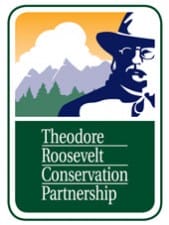Game and Fish Commission updates important migration corridor policies and practices


Cheyenne, WY -(AmmoLand.com)- The Wyoming Game and Fish Commission has approved policy updates that will benefit big game animals along migration corridors.
Yesterday’s decision came after more than a year of developing new science-based conservation strategies for these important movement corridors between winter and summer habitats for species like elk, mule deer, and pronghorn.
“No different than migratory birds, big-game animals must have access to quality habitat where they can rest and nourish themselves along their migratory journey,” says Ed Arnett, senior scientist for the Theodore Roosevelt Conservation Partnership. “Migration corridors and stopover areas have not received much attention or priority in conservation decisions, and we’re pleased to see that tide turning.”
Migration corridors are now recognized by the Wyoming Game and Fish Department’s policy as “vital” habitats, meaning they should be managed to ensure no net loss of population or habitat function. New data has introduced the need to define migratory bottlenecks—where animal movement becomes constrained, perhaps by a highway or fence—and stopover areas where animals feed and rest during migration. These policy definitions become important as the Game and Fish Department coordinates with federal land management agencies and other state agencies on common goals and decisions regarding energy development, mining, or recreational activities that may impact wildlife health and survival.
Updates to the policy were prompted by recent studies of mule deer migrating from Wyoming’s Red Desert to Hoback in the western half of the state. Mule deer are an icon of the American West and highly sought after by sportsmen in Wyoming and beyond.
“Healthy populations of mule deer and other big game are a key economic driver for Wyoming’s economy,” says Josh Coursey, President and CEO of the Muley Fanatic Foundation. “The Commission’s decision will begin benefiting the wildlife and people of our state today and provide a model for others to follow in the future.”
“Sportsmen support multiple-use management, energy development, grazing, and other uses of our western landscapes, but we believe that all uses must be balanced with wildlife habitat needs,” says Joy Bannon, Field Director for the Wyoming Wildlife Federation, who added that collaboration made the new strategy possible. “Meetings between sportsmen, wildlife managers, and other stakeholders enabled us to collaboratively formulate a reasonable strategy for protecting our migrating elk, mule deer, bighorn sheep, and pronghorn.”
View this press release on the web.
For more information on the TRCP visit our website.
Connect with us on Facebook.
Follow us on Twitter.
Subscribe to the Roosevelt Report.
Inspired by the legacy of Theodore Roosevelt, the TRCP is a coalition of organizations and grassroots partners working together to preserve the traditions of hunting and fishing. Ensuring access to quality fish and wildlife habitat safeguards the $646-billion contribution that sportsmen and women make to the American economy.
About Theodore Roosevelt Conservation Partnership:
Inspired by the legacy of Theodore Roosevelt, the TRCP is a coalition of organizations and grassroots partners working together to preserve the traditions of hunting and fishing. Ensuring sportsmen’s access to quality fish and wildlife habitat safeguards the $646-billion contribution that sportsmen make to the American economy.
For more information on the TRCP, please visit our website at www.TRCP.org.
